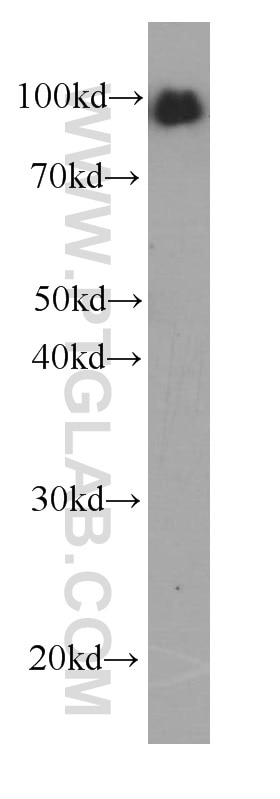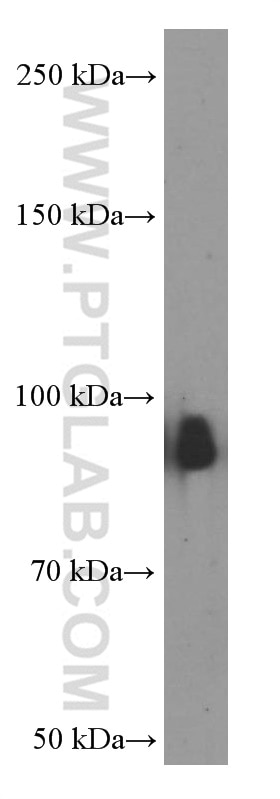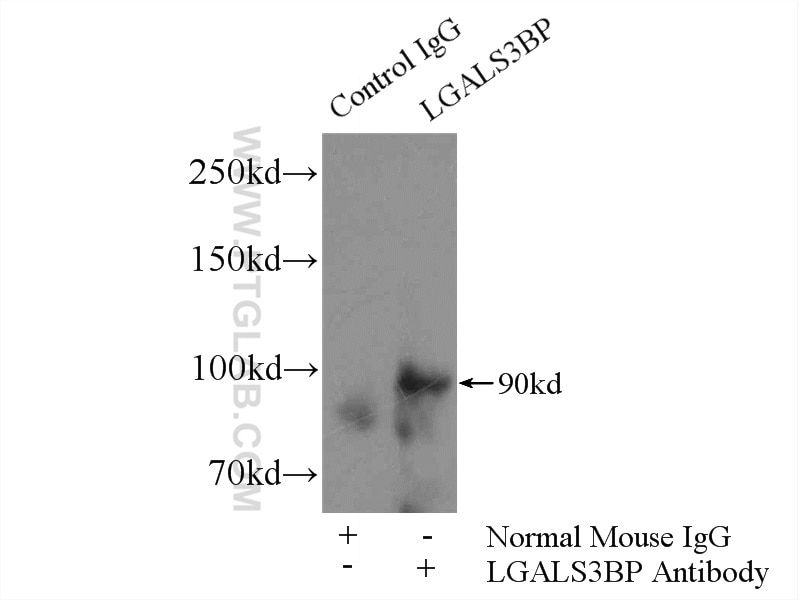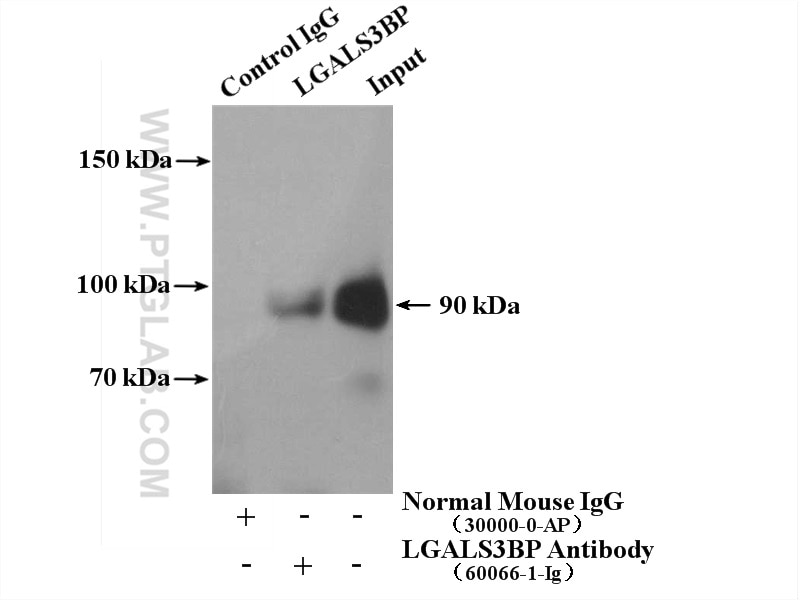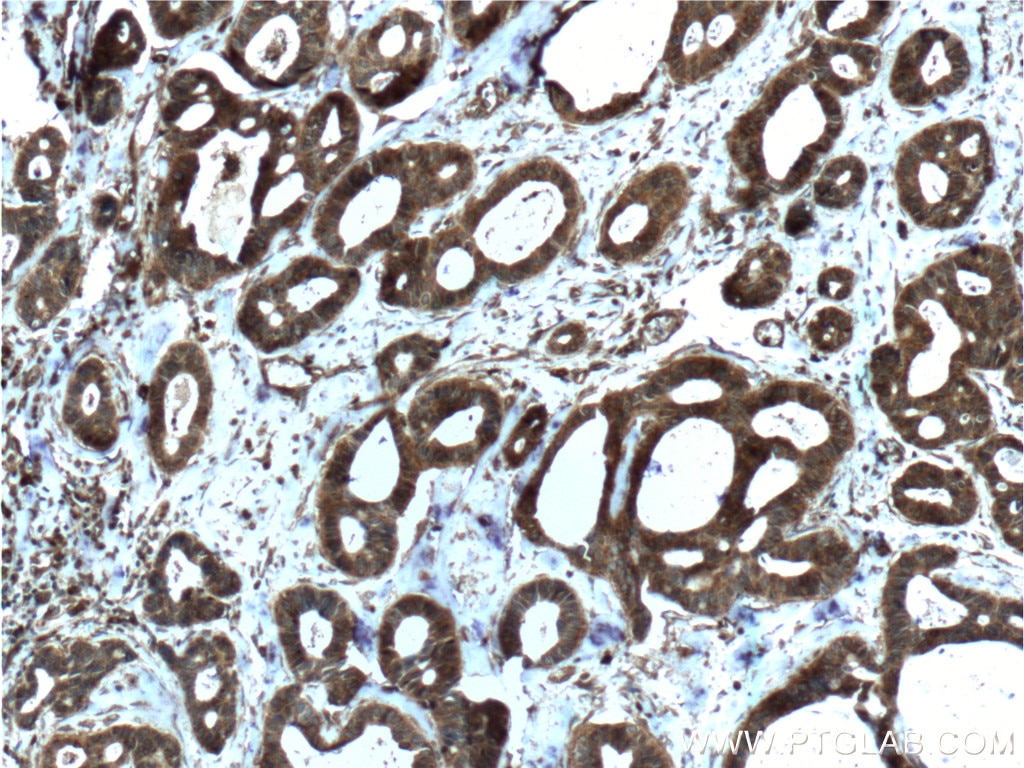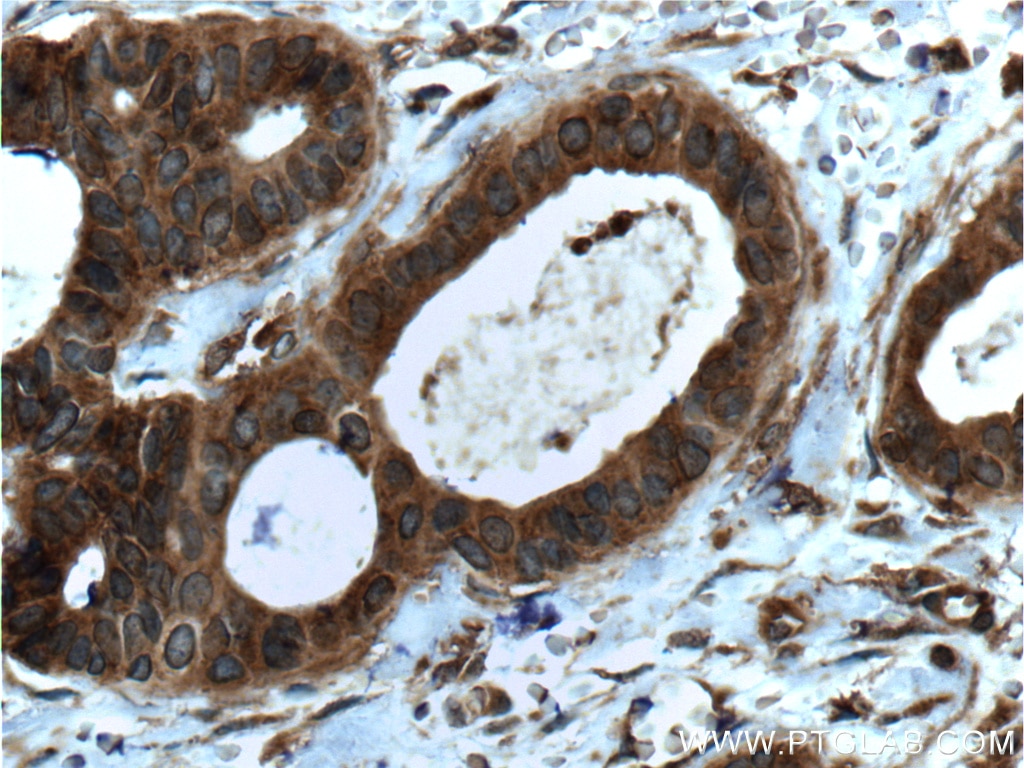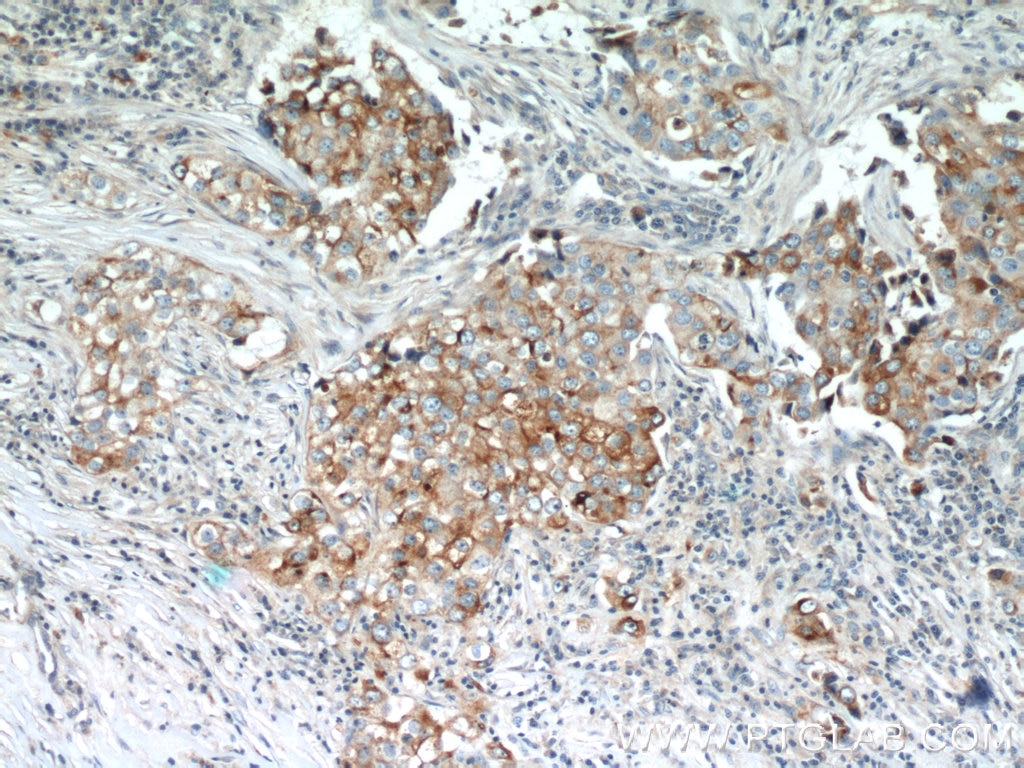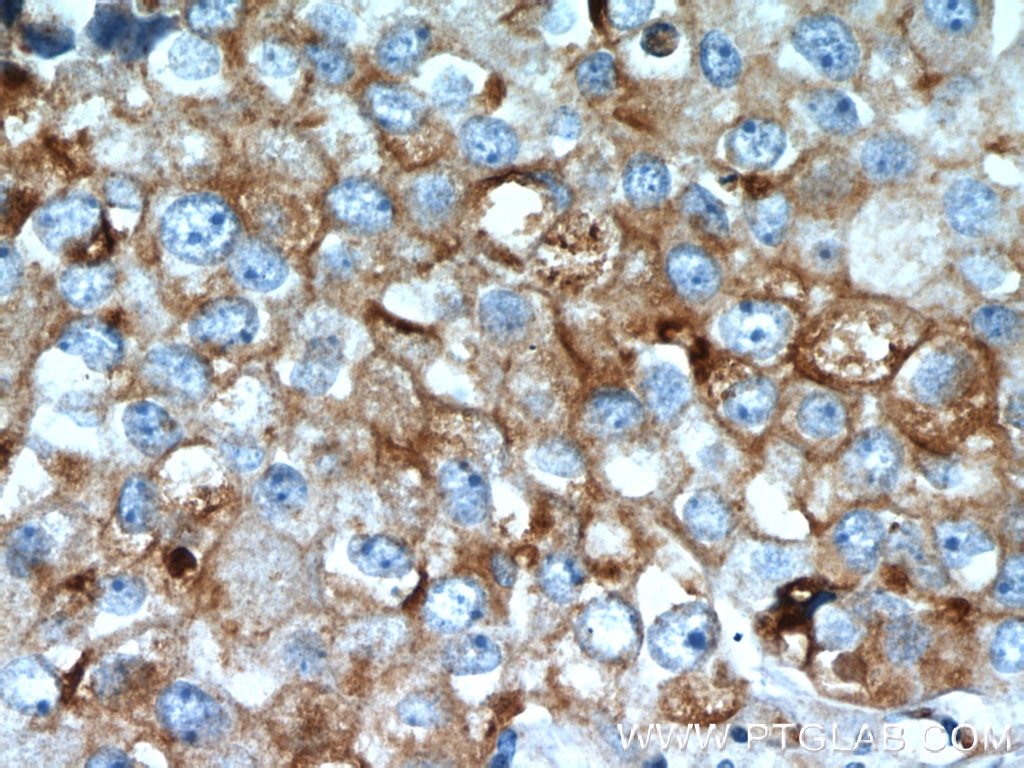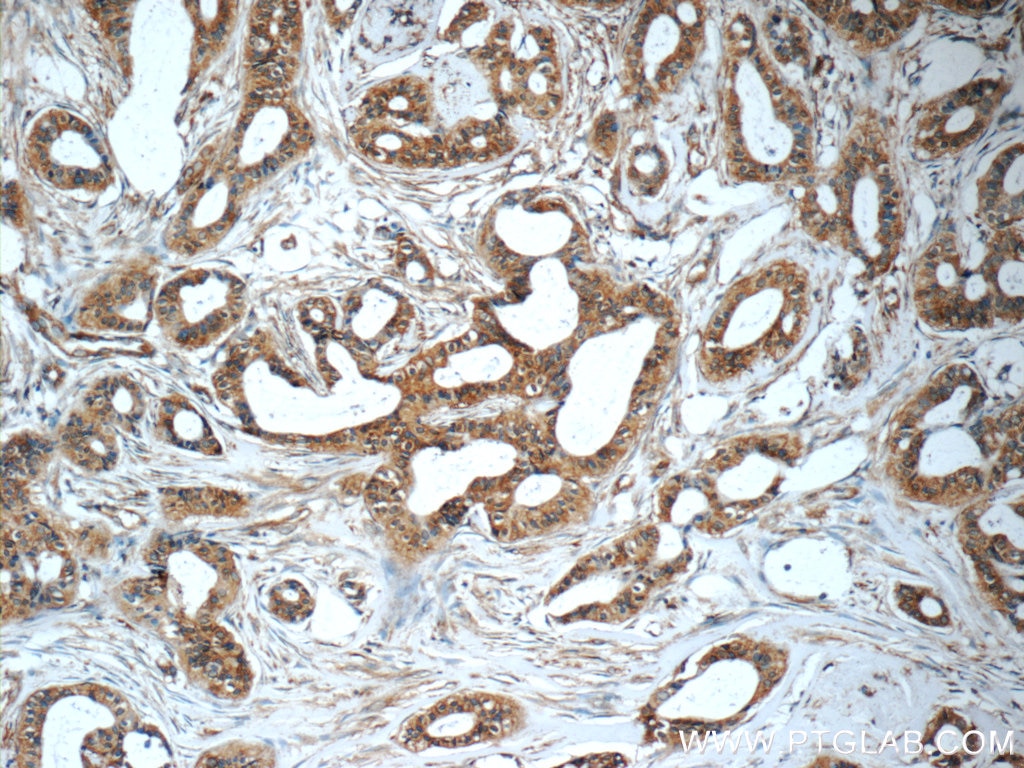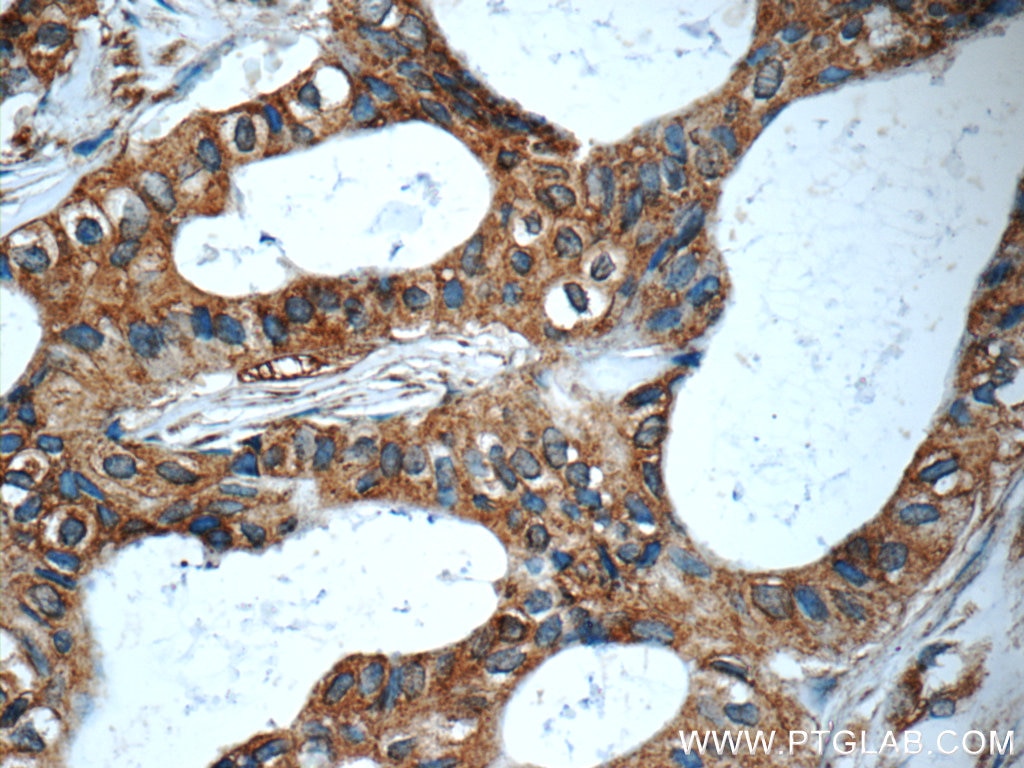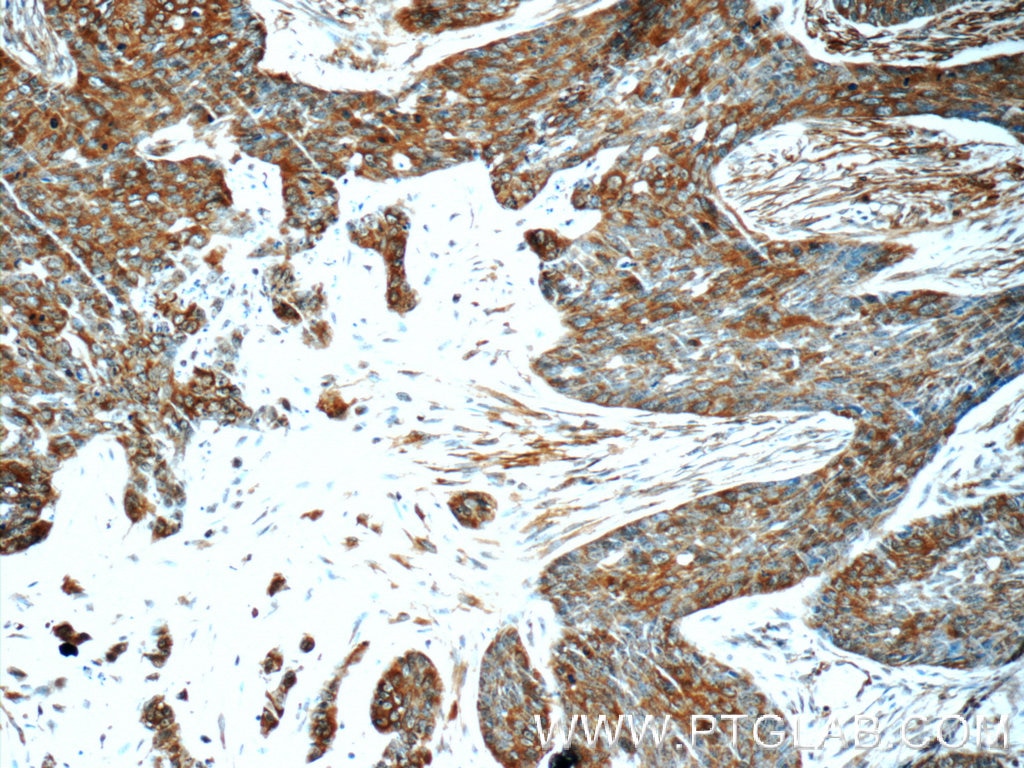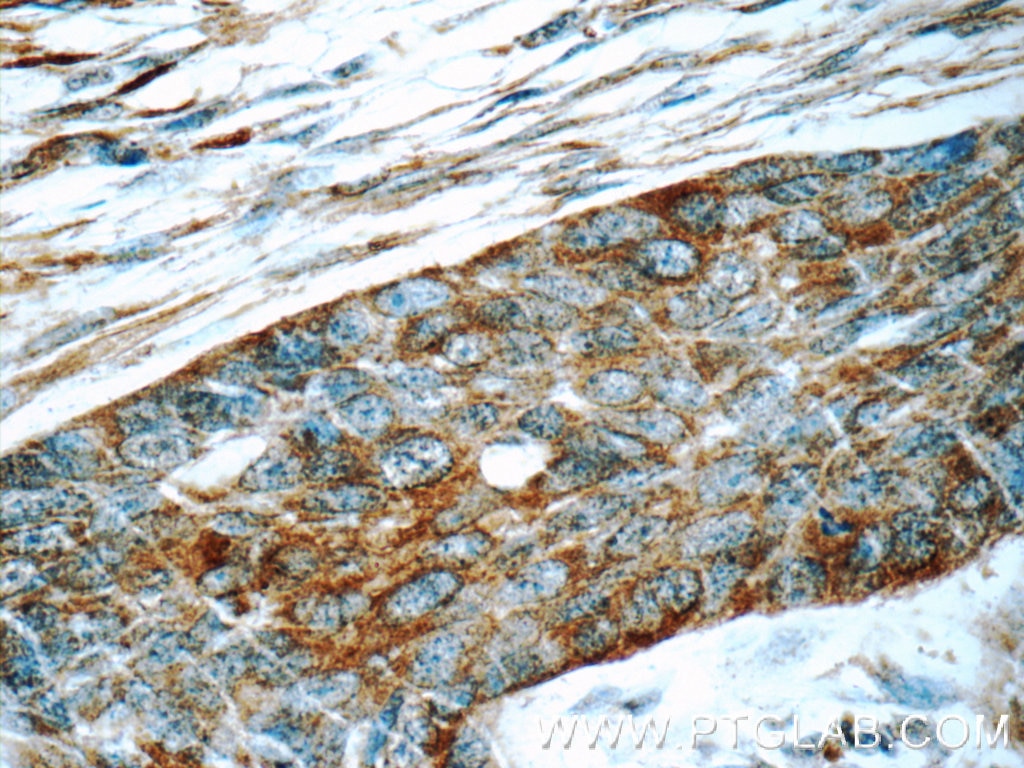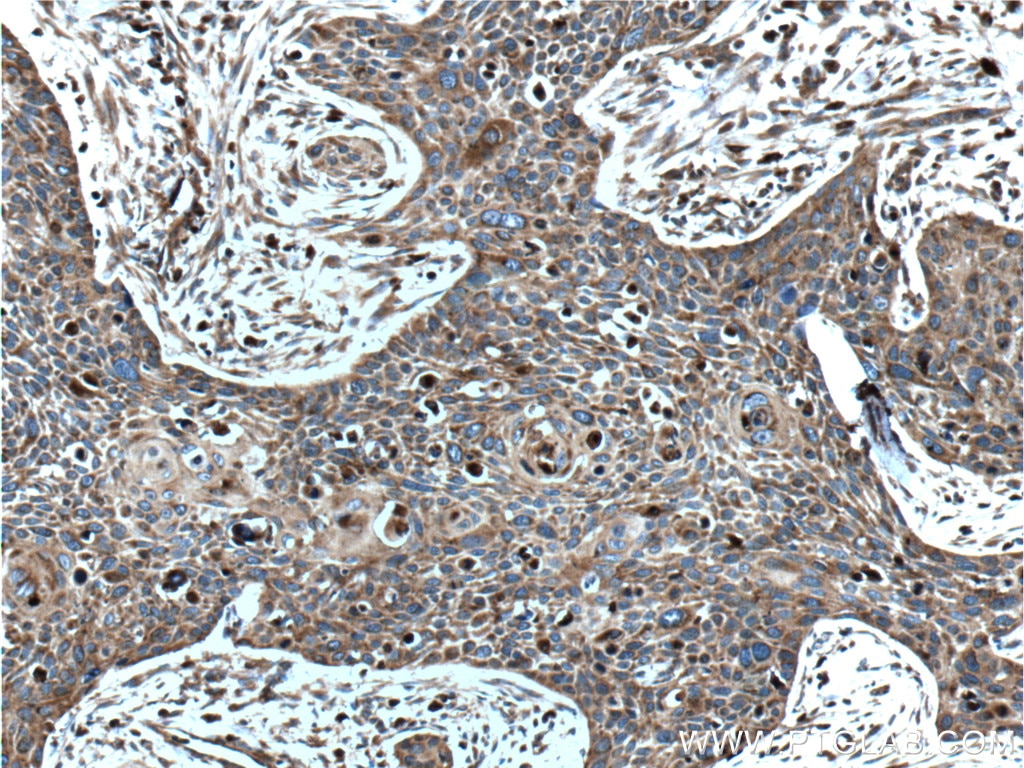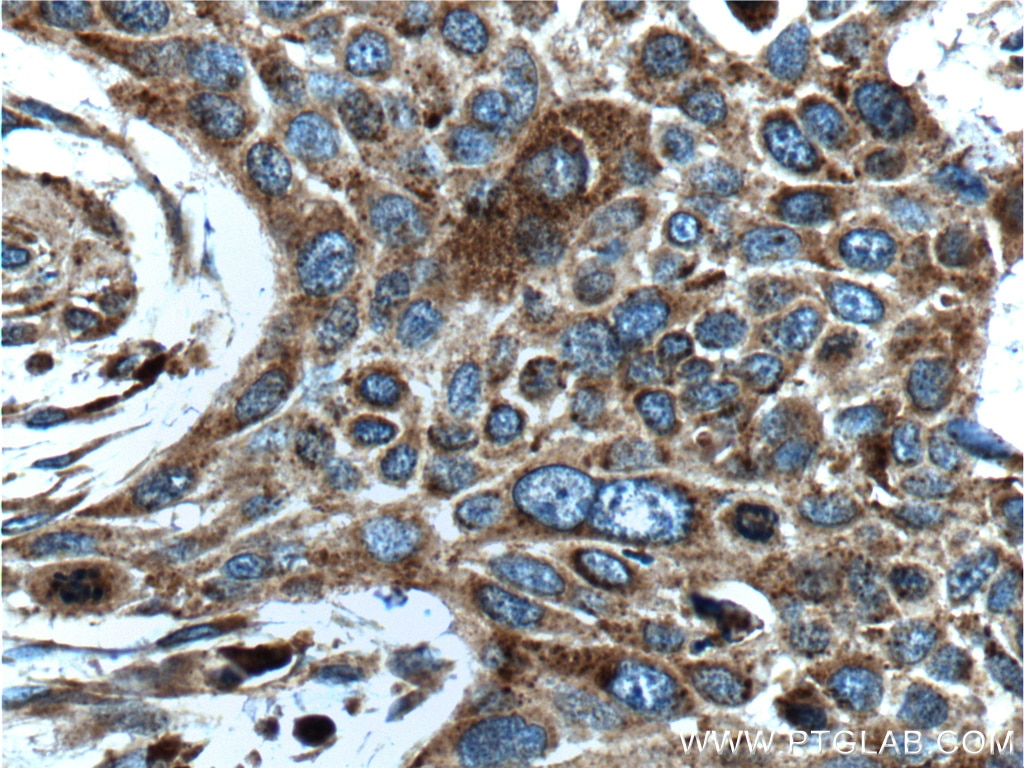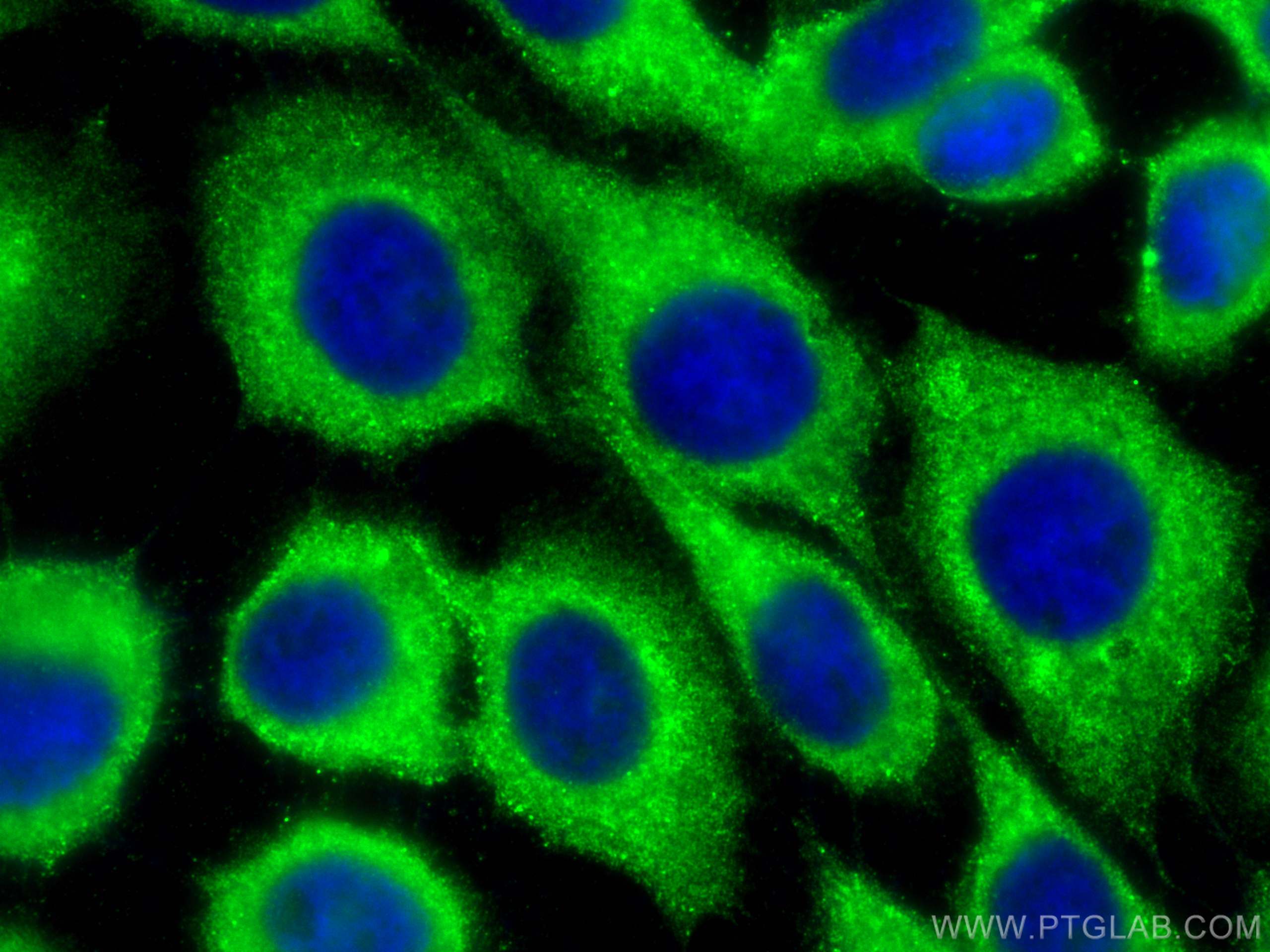Anticorps Monoclonal anti-LGALS3BP
LGALS3BP Monoclonal Antibody for WB, IHC, IF/ICC, IP, ELISA
Hôte / Isotype
Mouse / IgG2b
Réactivité testée
Humain et plus (1)
Applications
WB, IHC, IF/ICC, IP, ELISA
Conjugaison
Non conjugué
CloneNo.
2D8E11
N° de cat : 60066-1-Ig
Synonymes
Galerie de données de validation
Applications testées
| Résultats positifs en WB | tissu sanguin humain |
| Résultats positifs en IP | tissu plasmatique humain |
| Résultats positifs en IHC | tissu de cancer du sein humain, tissu de cancer de la peau humain, tissu de cancer de l'œsophage humain il est suggéré de démasquer l'antigène avec un tampon de TE buffer pH 9.0; (*) À défaut, 'le démasquage de l'antigène peut être 'effectué avec un tampon citrate pH 6,0. |
| Résultats positifs en IF/ICC | cellules A431, |
Dilution recommandée
| Application | Dilution |
|---|---|
| Western Blot (WB) | WB : 1:1000-1:4000 |
| Immunoprécipitation (IP) | IP : 0.5-4.0 ug for 1.0-3.0 mg of total protein lysate |
| Immunohistochimie (IHC) | IHC : 1:50-1:500 |
| Immunofluorescence (IF)/ICC | IF/ICC : 1:400-1:1600 |
| It is recommended that this reagent should be titrated in each testing system to obtain optimal results. | |
| Sample-dependent, check data in validation data gallery | |
Applications publiées
| WB | See 4 publications below |
Informations sur le produit
60066-1-Ig cible LGALS3BP dans les applications de WB, IHC, IF/ICC, IP, ELISA et montre une réactivité avec des échantillons Humain
| Réactivité | Humain |
| Réactivité citée | Humain, souris |
| Hôte / Isotype | Mouse / IgG2b |
| Clonalité | Monoclonal |
| Type | Anticorps |
| Immunogène | LGALS3BP Protéine recombinante Ag0294 |
| Nom complet | lectin, galactoside-binding, soluble, 3 binding protein |
| Masse moléculaire calculée | 585 aa, 65 kDa |
| Poids moléculaire observé | 65-90 kDa |
| Numéro d’acquisition GenBank | BC002403 |
| Symbole du gène | LGALS3BP |
| Identification du gène (NCBI) | 3959 |
| Conjugaison | Non conjugué |
| Forme | Liquide |
| Méthode de purification | Purification par protéine A |
| Tampon de stockage | PBS with 0.02% sodium azide and 50% glycerol |
| Conditions de stockage | Stocker à -20°C. Stable pendant un an après l'expédition. L'aliquotage n'est pas nécessaire pour le stockage à -20oC Les 20ul contiennent 0,1% de BSA. |
Informations générales
The galectins are a family of beta-galactoside-binding proteins implicated in modulating cell-cell and cell-matrix interactions. Galectin-3-binding protein (LGALS3BP, also known as 90K or Mac-2 BP) is a secreted glycoprotein which binds galectin-3, galectin-1, beta1 integrins, collagens and fibronectin (PMID: 8034587; 8024581; 11146440; 9501082). It has been implicated in tumor metastatic processes, as well as in other cell adhesion and immune functions. Levels of LGALS3BP have been found elevated in the serum of patients with cancer and in those infected by the human immunodeficiency virus (HIV) (PMID: 7698018). Western analysis suggests that LGALS3BP is found in breast milk, semen, saliva, urine, and tears, in addition to serum (PMID: 8390986 ). LGALS3BP has a predicted mass of ∼65 kDa. It is heavily glycosylated and shows an apparent molecular weight of 90 kDa on SDS-PAGE.
Protocole
| Product Specific Protocols | |
|---|---|
| WB protocol for LGALS3BP antibody 60066-1-Ig | Download protocol |
| IHC protocol for LGALS3BP antibody 60066-1-Ig | Download protocol |
| IF protocol for LGALS3BP antibody 60066-1-Ig | Download protocol |
| IP protocol for LGALS3BP antibody 60066-1-Ig | Download protocol |
| Standard Protocols | |
|---|---|
| Click here to view our Standard Protocols |
Publications
| Species | Application | Title |
|---|---|---|
PLoS Pathog Inducible LGALS3BP/90K activates antiviral innate immune responses by targeting TRAF6 and TRAF3 complex. | ||
Invest Ophthalmol Vis Sci LGALS3BP in Microglia Promotes Retinal Angiogenesis Through PI3K/AKT Pathway During Hypoxia. | ||
Proteomics Combination of size-exclusion chromatography and ion exchange adsorption for improving the proteomic analysis of plasma-derived extracellular vesicles | ||
bioRxiv Galectin-3-binding protein inhibits extracellular heparan 6-O-endosulfatse Sulf-2 |
